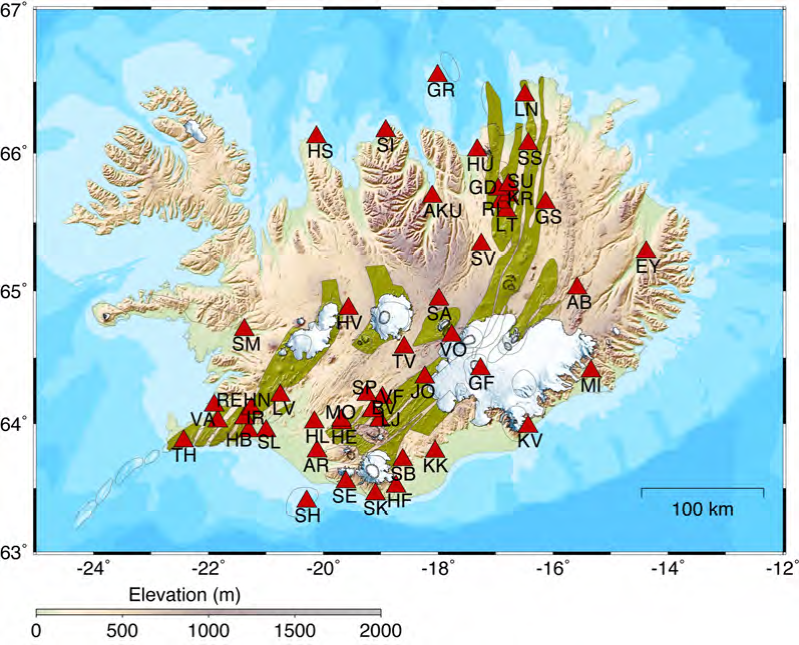The history of seismography in Iceland began in 1909 with the installation of one horizontal Mainka seismograph in Reykjavík. Following a period of intermittent operation, regular operation was initiated in 1925 with the establishment of the Icelandic Meteorological Office. The number of stations increased gradually over the following decades, and in the sixties, four stations were in operation. The number of permanent stations proliferated following the Heimaey eruption in 1973 and during most of the eighties the number of stations was 40–50. The first digital seismograph stations were installed in 1990 and the analog seismic network was gradually replaced by digital stations over the next two decades. Between 1910 and 1920 the number of seismograms grew to an estimated 300,000. A four-year project to make this record collection accessible on the internet has been initiated and funded. So far around 175,000 seismograms have been scanned and the results are available and free for download on the open website seismis.hi.is.
The seismograms are scanned with a resolution of 300 dpi and presented on the website as jpg-, and png-file. The high-resolution files are on the order of 4–8 Mb each. Digitization of the seismic traces has not been attempted since most of the seismograms are from short-period instruments and the waveforms are already lost. In addition to numerous teleseismic body-wave-phases, the record collection contains primary data from various tectonic and magmatic events in Iceland during the last century. This includes eruptions of Hekla in 1947, 1970, 1980–81, 1991 and 2000, Surtsey in 1963–1967, Heimaey in 1973, Askja in 1961, Grímsvötn in 1934, 1983, 1998, and 2004, Gjálp in 1996, rifting episode at Krafla in 1975–1984, persistent seismic activity of the Bárðarbunga and Katla volcanoes, numerous suspected subglacial magmatic events, earthquake swarms on the Reykjanes Peninsula Oblique Rift and within the Tjörnes Fracture Zone, and earthquake sequences in the transform zones of South and North Iceland and adjacent segments of the Mid-Atlantic Ridge.

